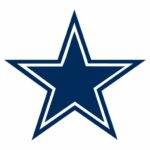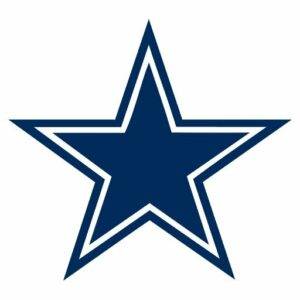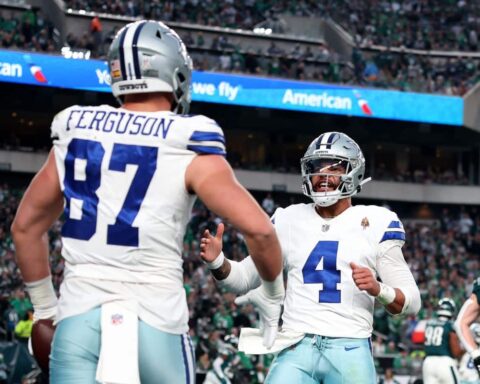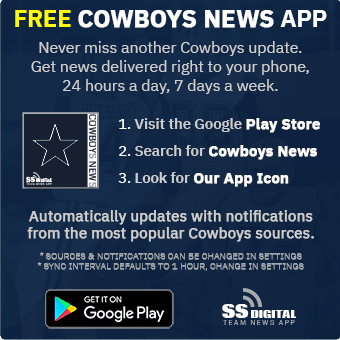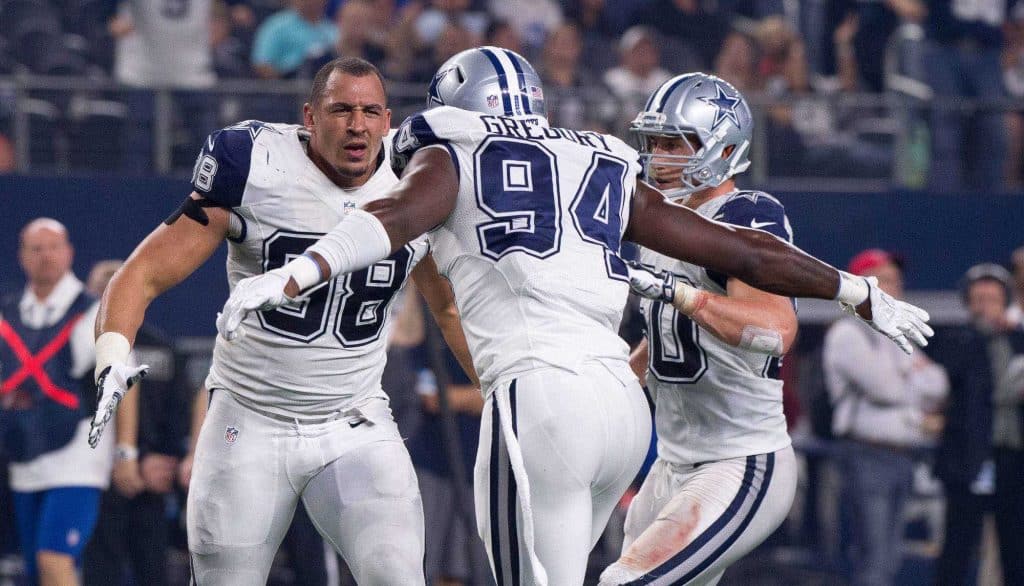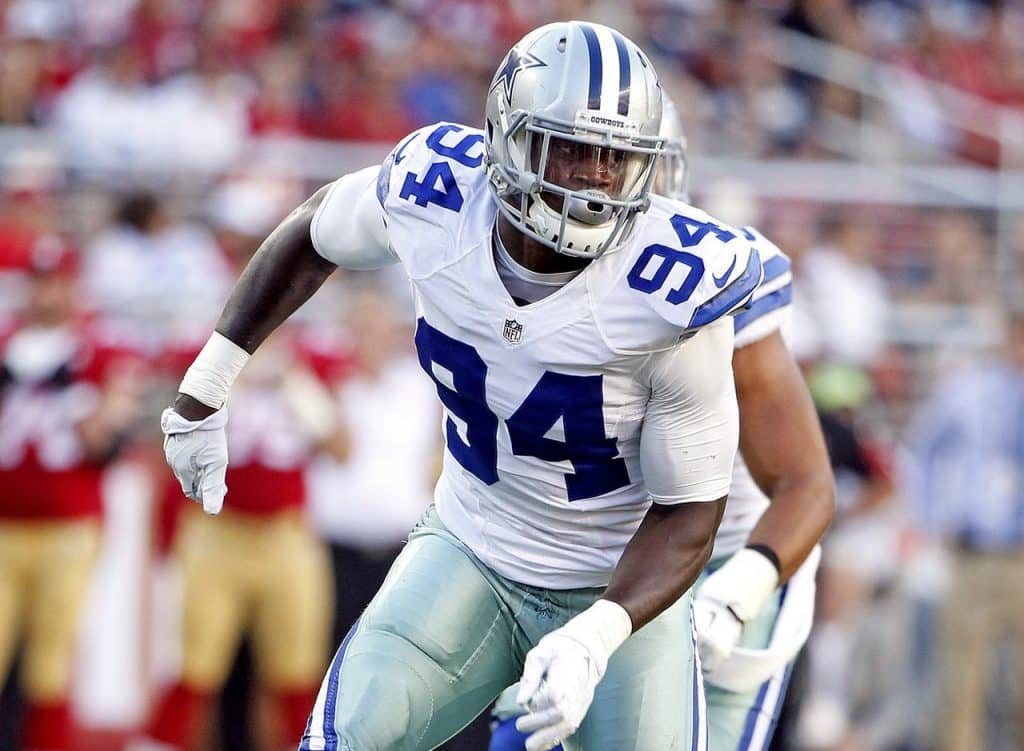The Dallas Cowboys have had a ton of player movement on both sides of the football this offseason. Wide receiver overhauls, retirements, releases, and new acquisitions have changed the face of the Dallas Cowboys on the offensive side of the football. No longer are Dez Bryant and Jason Witten the names of note at wide receiver and tight end for the Dallas Cowboys, and all eyes turn to Dak Prescott, Ezekiel Elliott, and the offensive line to lead the team into 2018.
For fantasy footballers everywhere, there are a ton of questions that surround the Dallas Cowboys, so here I am to answer them. This will be a position by position breakdown of the team’s fantasy football prospects and how you can take advantage.
Quarterback
Dak Prescott
As I outlined not long ago in my 2018 projection of Dak Prescott, I believe he is a good quarterback on the rise to elite levels. Only one player since the early 2000s has had double-digit rushing touchdowns in a season, Cam Newton, and he’s done it twice since entering the league.
Dak Prescott has averaged six rushing touchdowns over his first two seasons and when he ran in 2017, he was much more effective than in 2016 to the tune of a 1.5 yards per carry year-to-year increase.
Here is what Dak Prescott’s 2017 stat line would have looked like at his first eight games of the season pace:
- 326 completions on 518 attempts for a completion percentage of 63%
- 3,636 passing yards
- 32 touchdown passes to 8 interceptions
- 390 rushing yards on 50 attempts for 8 rushing touchdowns
Note. I’ve previously stated that Dak was on pace for 12 rushing touchdowns through the first half of 2017, upon further review, I made a mistake. He was on pace for eight rushing touchdowns. My apologies.
On the fantasy football side of things, Dak has been a very good option since his rookie campaign in the NFL. In 2016, Dak Prescott provided 12 games in which he scored more than 15 standard fantasy football points. In 2017, he was on pace for 14 such games after having seven in the first half of the season, but had only two more over the second half.
He’s been a safe floor for fantasy football teams over the course of his two-year career, but has also exceed 20 points in standard quarterback scoring 12 times in 32 games.
Currently, he’s being drafted on average as the 17th quarterback in fantasy football despite finishing inside the quarterback top 12 in 2016 and as the QB13 in points per game in 2017.
In total quarterback scoring, Dak was QB10 on the season in 2017.
The Dallas Cowboys have upgraded their offensive line’s starting five as well as the depth behind the starters in the event there is an injury this season, and so I feel much better about Dak and the offense going into 2018 than others might.
In addition to offensive line depth, there isn’t the lingering suspension of best friend and running buddy Ezekiel Elliott hanging over the offense’s head.
When Zeke plays, Dak is better. Without Zeke in the offense, Dak averaged only 12.84 fantasy points per game. When Dak was without Tyron Smith and Ezekiel Elliott for two games, Dak averaged 7.52 points per game against the Atlanta Falcons and the Philadelphia Eagles.
If you aren’t playing with other Cowboys fans, you are likely able to get a great value at quarterback if you wait on Dak Prescott in your leagues. If you don’t believe me, check out Spoony’s thread.
This is an excellent analytical discussion on Dak’s value at the moment, relative to what Dak has been as a fantasy football option:
https://twitter.com/spoony____/status/1017553764763529216
Running Backs
Ezekiel Elliott
Let me start by saying, Ezekiel Elliott is my number one player in all of fantasy football. You may call me a homer, and that’s fine. I’ll admit, I’m a Dallas Cowboys fan through and through, but I’m also going to throw a bunch of statistics at you as well.
Since the 1970 AFL/NFL merger, only two running backs have averaged more yards per game in their first two seasons than Ezekiel Elliott’s 104.6 rushing yards per game: Eric Dickerson and Clinton Portis.
As a rookie, Ezekiel Elliott led the league in rushing and accumulated 1,994 total yards while sitting out the week 17 contest against the Philadelphia Eagles. In 2017, even though he sat out six games in the middle of the season and had a game against the Denver Broncos where he rushed for eight yards on nine carries, Elliott nearly had 1,000 yards rushing.
Elliott’s two-year total yard average is 129.9 yards per game. In year two, he saw an increase in targets and is an amazingly effective pass catcher.
Over two seasons and 58 receptions, Ezekiel Elliott has a 10.9 yards per reception average. As we’ve seen in games against the Pittsburgh Steelers, San Francisco 49ers, and the Washington Redskins, Elliott is excellent on screen passes. Although he’s only averaged 2.3 receptions per game, he’s been really good with those receptions.
Over his 25 game career he’s scored 25 touchdowns. You can do the math there. When a player is as consistent as Elliott has been in scoring touchdowns, it’s hard not to love him in fantasy football.
So, if you look at his career averages at this point, you’re looking at 18.9 standard fantasy points per game over the first two seasons of his career. In his two years he’s only had one game where he didn’t reach 10 fantasy points, the week two game vs Denver in 2017.
That’s an amazingly consistent floor.
In his 25 games, he’s had 15 games go over 15 fantasy points and 10 games go over 20 fantasy points.
In the last two seasons, no running back who’s rushed for at least 1,800 yards has more rushing yards, rushing touchdowns, or a better yards per carry than Elliott. And while we like our running backs to be able to catch the football, the most important thing is what they do with it when it’s handed to them.
You may like Todd Gurley or Le’Veon Bell or David Johnson more, but to me there isn’t a player who’s as safe as Ezekiel Elliott in the top five of your fantasy football drafts. Gurley has had an up and down career, though he was incredible in 2017, Bell is in the midst of a hold out, and Johnson is coming off of an injury.
Take who you like most of those four, but for me it’s Elliott all the way.
For more statistical analysis on Ezekiel Elliott, you can read my in-depth 2018 projection for him here at Inside The Star.
Rod Smith
Rod Smith is the primary handcuff for Ezekiel Elliott, but you shouldn’t necessarily be in a rush to own him. He was ok in 2017 as a reserve rusher while Elliott was suspended. Smith – in a time share with Alfred Morris – only eclipsed 100 total yards one time, week 13 vs the New York Giants when he caught five passes for 113 yards to go with his six carries for 47 yards.
In the six games that Elliott sat out, Smith averaged 3.56 yards per carry on 43 carries. Morris got the majority of the workload with 99 carries and was far better with 4.34 yards per carry. Smith did score five touchdowns to Morris’ one, but it’s hard to say just how reliable Smith will be as a backup runner if called into full-time duty.
There is a bit of competition for secondary touches in the backfield now with the return of the Dallas Cowboys’ 2016 sixth round pick Darius Jackson, the addition of Tavon Austin via trade, and the selection of rookie Bo Scarbrough in the seventh round of the 2018 NFL Draft.
In 2016 when Ezekiel Elliott played a full season, the Dallas Cowboys ran the ball 499 times. If you take away his 322 carries and Quarterback Dak Prescott’s 57, that leaves only 120 carries for the rest of the running back group. That’s 7.5 carries per game remaining. With Tavon Austin in the fold, I’d imagine he gets a carry or two per game, which leaves 5-6 carries available for the rest of the running back group.
Even if Smith is the primary backup, there isn’t enough work for him to be a viable fantasy football running back for you. So you have to ask yourself, is he worth a roster spot if he’s only getting five carries a game?
Smith may be the front-runner to back up Ezekiel Elliott but I don’t think his job is necessarily secure. If Jackson or Scarbrough can have a big camp, it might push Smith.
At the moment, in deep leagues, you can draft Smith with one of your late picks, but I wouldn’t sweat it if you have needs elsewhere. Elliott has shown to be a durable player over the years.
Bo Scarbrough and Darius Jackson
At the moment, I wouldn’t draft either of these guys in any redraft or short-bench formats. There is just too much uncertainty as to who will make the roster.
Scarbrough has the advantage of being the recent draft pick, but Darius Jackson has a slight experience edge and is probably better prepared to play special teams at the moment. If you’re in a dynasty league, Bo is probably the one you should own, but he’d be no more than an end-of-the-roster stash.
The Dallas Cowboys don’t give their secondary running backs a lot of work and it’s extremely unlikely that a third running back gets much work.
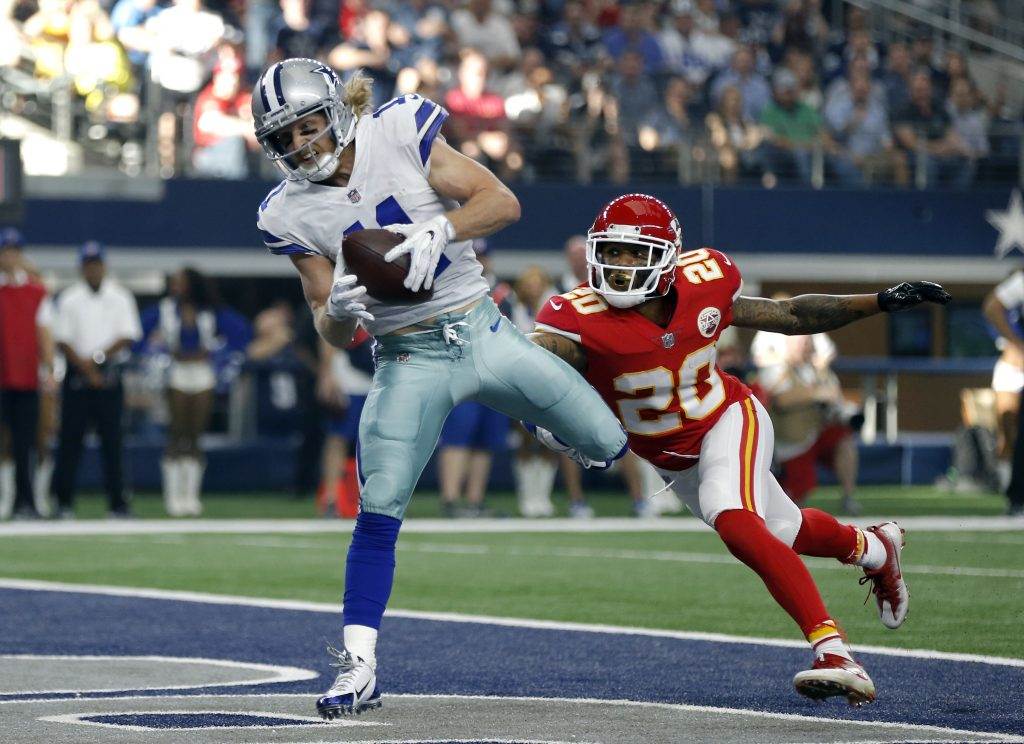
Wide Receiver
I’ll go on record and say that some of this is guess-work based on what we know at the moment from OTAs and minicamp. How I rank them is based on the confidence I have that they’ll have a role in 2018.
The difficulty in predicting how the wide receivers will be deployed and who will be the lead guy is in understanding the Dallas Cowboys’ offense.
Dak Prescott’s game is predicated on working through his progressions to find the wide receiver that’s open. Sometimes that will be his first look and sometimes it will be the fourth option in the play. As we’ve seen with Dak and former Cowboys Wide Receiver Dez Bryant, Dak never really looked comfortable forcing the ball Dez’s way and their chemistry never really worked.
Dak is at his best when he can allow the play to develop and get the ball to the open guy. The Dallas Cowboys have done a good job of collecting a group of receivers who don’t need to be “thrown open,” but will utilize their route running and quickness to create good throwing windows for Dak.
The other aspect is understanding that the Dallas Cowboys are a running team.
I mentioned it last week when reviewing the Dallas Cowboys’ 2017 offense that they ran the ball the third most of any team in the NFL at a rate of 47.9% of their plays.
Any thoughts we have about the wide receiver group should have tempered expectations because who emerges week to week should look different depending on the matchups. The fact that Ezekiel Elliott and the run game are going to eat up so much of the play calling will limit the ceiling of the wide receiver group.
Through two seasons, Dak Prescott has only averaged 474.5 passing attempts per season. In 2016, his best season to date, he only attempted 459 passes.
In that 2016 season, when Dak Prescott was so successful, he fairly evenly dispersed his targets among his top three wide receivers Cole Beasley (98), Dez Bryant (96), and Jason Witten (95), with Terrance Williams coming in fourth (61).
Dez Bryant missed three games to injury, but if we prorate his target number he’s looking at 118 targets over the course of a 16-game season. That comes out to a one target per game difference between Dez and Cole Beasley.
If everything goes according to plan, the Dallas Cowboys should see this kind of target dispersal amongst their top four targets.
One thing to note is that none of the Dallas Cowboys receivers are going to cost you in drafts. They’ll be available after the 12th round of drafts in pretty much any format, so you can gamble on them and not feel like you took a risk if they didn’t pay off.
Not like drafting Odell Beckham Jr. in 2017 with the 1.01 and then having him break his ankle the first game of the season, like I did.
With all that said, let’s try to figure out this wide receiver group a little bit.
Allen Hurns
At the moment, Allen Hurns is the wide receiver I want to own in the Dallas Cowboys passing game. His ability to fill a lot of what Dez Bryant could do, while also mixing in a strong ability to run routes to the middle of the field makes him a strong candidate to be the top wide receiver on the roster in 2018.
Slowed by injuries for much of 2016 and 2017, Hurns went over 1,000 yards receiving in 2015 while playing in only 15 games.
If we were to adjust Hurns’ yardage pace over the course of his career to a complete 16 game season, he’d have averaged 821 yards per season. That’s not a great number, but it’s serviceable for someone you are going to use for a bye week or two.
For his career he’s averaged 14.1 yards per reception and has scored 21 touchdowns. That touchdown number is inflated by the 10 he caught in 2015. Let’s just say that anyone who can go for 1,000 yards and 10 touchdowns with Blake Bortles as their quarterback should be taken fairly seriously as a wide receiver threat.
To begin the season, I like Hurns the most out of this group of players.
The veteran has the ability to play all over the formation and uses good route running, strong hands, and toughness to be a factor where Dak wants to get his guys the ball, the short to intermediate part of the field.
Cole Beasley
Cole Beasley has the most experience of any of the Dallas Cowboys wide receivers and has a role already locked in.
There was some thought before the Ryan Switzer trade with Oakland that Beasley may have some competition in Switzer, but that was quickly erased. We already knew Bease would be the slot guy. Then reports came out of offseason practices that the team has been moving Cole Beasley around the formation as opposed to only lining him up in the slot.
This seems to support the narrative that the Cowboys are trying to find a group of wide receivers they can line up in a variety of ways to take advantage of their varied skill sets.
The Dallas Cowboys love Cole Beasley. Dak Prescott loves Cole Beasley. What that means for his fantasy outlook is anyone’s guess.
After seeing 98 targets in 2016, Cole Beasley caught 75 passes for 833 yards and five touchdowns, Beasley had a bit of a fall back to Earth in 2017. Mostly related to teams beginning to take him away as Dak’s safety valve in 2017, Bease wasn’t nearly as productive as he was the previous year. On many plays, Cole was getting extra attention from a linebacker in his underneath routes making it more difficult for Dak to utilize his slot receiver.
The Dallas Cowboys’ offensive staff is making adjustments to hopefully get Beasley open a bit easier, but time will tell how it will turn out on the stat sheet.
In PPR formats I like Cole Beasley as a fifth or sixth wide receiver on your roster ’cause he has some upside play. He’s by far Dak’s go to guy on the roster.
Michael Gallup
Reports are that Michael Gallup was the most consistent wide receiver in OTAs and minicamp.
We know that rookie wide receivers have a difficult time transitioning to the NFL game and after the first round, that transition is a bit more difficult. However, I’d argue that Gallup might be the most underrated player from this draft class as he combines good size, speed, route running, and catching ability to be an impact player in year one.
Jeff Cavanaugh from 105.3 The Fan in Dallas/Fort Worth had Michael Gallup as his number one wide receiver in the 2018 NFL Draft.
That’s a minority opinion, but Jeff knows his stuff. Given the depth of this draft, getting him at 81 was impressive. Had it been a more shallow draft at WR, he probably comes off the board in the second round at the latest.
Despite having all the tools to be an impact player as a rookie, he’ll still have a bit of a depth chart hill to climb. The wide receiver room is pretty full at the moment, and if Terrance Williams is available as well, that clouds the picture for Gallup too.
In your fantasy drafts, I see Gallup as a late-round flier in standard and PPR leagues. How training camp unfolds and how he continues to build on his stellar offseason will determine how much he plays early in the preseason.
If he can show a consistent ability to beat press coverage, catch what’s thrown his way, and be effective as a blocker in the running game, then he’ll get a chance to prove himself early in the season.
Tavon Austin
He may get a RB or RB/WR designation in your fantasy leagues. No matter how he’s designated, the team and Tavon Austin have described him as a wide receiver this offseason. And that’s how he’s been used.
From OTAs and minicamp, it was reported that Austin was running with the first team offense when it went to its three wide receiver sets and that he was being targeted on deep routes as well as in the red zone. They’ve got plans for the former first round pick, who they acquired from the Los Angeles Rams for a sixth round pick this year.
Like others in the wide receiver group, it’s nearly impossible to predict the opportunities or targets that will come their way.
I’ve gone on record saying that Austin will likely get five offensive touches a game. A couple of carries and 3-5 targets or so. That’s not enough to really get all that excited about, but if you’re in a league that offers return yards, then you have a lot to get excited about as he’ll probably be the team’s primary kick returner.
Terrance Williams
Terrance Williams is the next most experienced wide receiver on the Cowboys depth chart behind Cole Beasley. He’s been an effective and productive player. He’s mixed in phenomenal play at times with some underwhelming play as well.
He’s a great blocker in the running game, which is very important to this team, so if he’s healthy, he’s going to have a role in the offense. Getting snaps, though, doesn’t mean he’s worth drafting in fantasy football.
Despite playing 16 games in each of the last two seasons, Williams hasn’t had more than 600-receiving yards. With the depth that Dallas has in this group, I find it very unlikely that he’ll eclipse that number in 2018 either.
The most important things to watch are off the field with Williams.
He broke his foot during the offseason and has been recovering and rehabbing since. Then there was a middle of the night incident where he allegedly ran his Lamborghini into a light pole in Frisco, TX and was arrested.
The league could respond with a suspension for violating the league’s Personal Conduct Policy. The Dallas Cowboys could opt to release Williams if a suspension occurs, to get out from his contract that runs through the 2020 season. It would cost them money to release him this year, but begin to get more cap relief after the 2018 season and even more after the 2019 season.
He could be a trade candidate if a team is willing to part with a sixth or seventh round pick.
Others to Watch
Noah Brown, Deonte Thompson, Lance Lenoir, and Cedric Wilson
The rest of the group will be on the roster bubble and could get pushed off the roster if the team feels they can’t carry six or seven receivers to start 2018. That includes 2018 free agent signee Deonte Thompson who definitely has the experience edge, but depending on the play of Austin, could find his role redundant.
Noah Brown has the best chance to make the roster based on his abilities in the run game.
Lance Lenoir and Cedric Wilson are intriguing players, but will most likely end up on the team’s practice squad as developmental depth.
My WR Rankings
- Allen Hurns
- Cole Beasley
- Michael Gallup
- Tavon Austin
- Terrance Williams
- Noah Brown
- Deonte Thompson
- Cedric Wilson
- Lance Lenoir
Tight End
If wide receiver is hard to figure out, then tight end is impossible. The Dallas Cowboys’ tight end group doesn’t have the experience that the wide receiver group has with Beasley, Williams, Hurns, and Thompson, and therefore is a more difficult group to predict.
I wrote last week about the tight end group and how the Dallas Cowboys could use a committee approach to their tight end deployment.
Of the tight ends, at the moment, I think it’s Geoff Swaim who gets the majority of the snaps with the first team since they do want to run the ball. He’s their best blocking tight end on the team and the most likely to make an impact week one. He hasn’t been used much in the passing game, but when Jason Witten is on the team, no tight end is going to be used much in the passing game.
Over the course of the season, however, I could see any of the remaining three tight ends — Blake Jarwin, Dalton Schultz, or Rico Gathers — working their way to the top of the depth chart.
If you pinned me down and asked me to pick one of the four to have the biggest impact in 2018, I’d choose Blake Jarwin.
The front office thought enough of him to prevent the Philadelphia Eagles from snatching him off of their practice squad by promoting him to the 53-man roster late in 2017, and he’s already been getting some time with the first team offense. Along with rookie Michael Gallup, Jarwin has been a standout for the offense.
Rico Gathers has the size and athleticism to have a huge impact in the passing game and, depending on how his blocking looks during training camp and in the preseason, he’s also got a shot to earn a role with the offense. He may not be the fastest, but his size allows him to box out defenders and he’s athletic enough to get down the seam and challenge in the middle of the field.
The team loves Dalton Schultz, their second fourth round pick in 2018. He didn’t get many opportunities to catch the ball at Stanford in their run-heavy offense, but he was effective when called upon. Because of his work in the run game, he’ll get a chance to be on the field in two and three tight end packages, and with his quickness could be targeted in goal line situations.
This is one of the more intriguing training camp battles to watch as the Dallas Cowboys report in six days.
Kicker
If your league still utilizes kickers, my philosophy is always wait till the last round to draft one.
Better yet, don’t bother drafting one at all and instead wait until the preseason plays out to give you more information on the roster you have before adding your kicker.
Dan Bailey is still one of the better kickers in the league, though he struggled during the last half of 2017 to make kicks and had his worst field goal percentage of his career by more than 10 percentage points. He only played in 12 games and had the fewest attempts of his career.
2017 seems like an aberration for Bailey, who has been one of the most accurate kickers in NFL history, trading that title with the Baltimore Ravens Justin Tucker for the last couple of years.
If you’re drafting with non-Dallas Cowboys fans — first, find new friends — you’ll probably be able to snag Dan Bailey in the last part of the last round of your draft, since most will probably go another direction.
The thing about Bailey is that when he’s on, he’s one of the best kickers in the NFL.
The Dallas Cowboys’ offense is really good at moving the ball, gaining on average 35 yards per drive in 2017. That means an average drive by the Dallas Cowboys gets them to the opposing 40 yard line, if an average drive started at the 25.
With better protection for Dak Prescott and better run blocking for Ezekiel Elliott, the Dallas Cowboys will get back to what they looked like on offense in 2016 and the first half of the 2017 season.
Punter
Yes, I’m going to talk about Punter Chris Jones briefly, since Fleaflicker.com has added punters as a roster option.
Chris Jones finished 2017 27th in yards per punt. He was second in the league at punts downed inside the 20 and first in the NFL with 51.5% of his punts downed inside the 20. His touchback percentage was tied for 23rd in the NFL at 7.6%, while his net punt was eighth in the NFL at 41.4 yards per punt.
Punting stats taken from FoxSports.com.
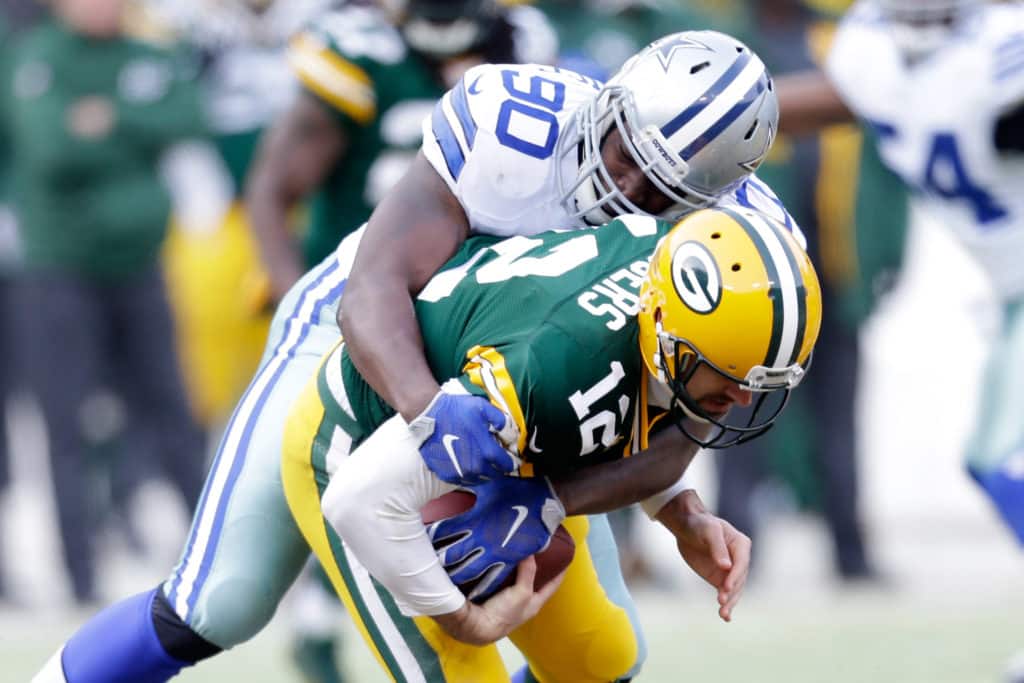
Defense
Dallas Cowboys Team Defense
The Dallas Cowboys finally received an elite pass rushing effort from DeMarcus Lawrence in 2017 to the tune of 14.5 sacks, but finished in the middle of the pack in total sacks. Some of that is due to David Irving missing the first four games of 2017 due to suspension and the last four due to concussion.
Irving will miss the first four games again in 2018, but hopefully the Dallas Cowboys have found a few more guys who can rush the passer and can add to their 38 sacks from 2017.
They’ve got a host of players with potential to help out on the right side of the defensive line after starter Tyrone Crawford. It’s the interior that is a question mark, at least for the first four games. The Dallas Cowboys coaching staff is hoping that Jihad Ward and Datone Jones can fill the gap left by Irving’s suspension.
The point is, they need help from someone on the line. DeMarcus Lawrence can’t do it all.
The thing I’m looking for when it comes to this defense is an increase in interceptions with the hiring of Defensive Backs Coach and Passing Game Coordinator Kris Richard, who brings with him the aggressive mentality from the Seattle Seahawks’ “Legion of Boom.”
Richard’s going to have his corners playing more press in coverage, which if they are as good as Cowboys Nation hopes they are, should put them in position to get their hands on more footballs.
2017 was the first time since 2010 that the Seattle Seahawks were outside the top 10 in yards allowed (11th) and points allowed (13th), despite having a ton of injuries to the defense. Four times between 2011 and 2017 did the Seattle Seahawks finish first in the NFL in points allowed. The other years in that seven season span they finished third, seventh, and 13th.
Twice during that same span did the Seahawks finish first in the NFL in yards allowed.
Now, we know that they don’t have the players on that Seattle did during their elite years, but the defensive back group has a lot of potential. They play sticky in coverage and with an edge to their games.
With Kris Richard at the helm of the defensive backs group, there’s no telling how high they can climb.
Individual Defensive Players (IDPs)
As far as Individual Defensive Players go, Sean Lee is the Dallas Cowboy to own. He’s an elite linebacker when healthy and will give you plenty of tackles as well as plays on the ball in the passing game.
After Lee, Jaylon Smith is worth taking a shot on if you have a deep bench and can stash him. All signs point to him being much closer to 100% than he was a year ago. Even if he’s >90% recovered from the devastating knee injury he suffered in the Fiesta Bowl in 2016, he’ll be an elite middle linebacker for the Cowboys.
In the secondary, I’d target Xavier Woods. He has the most well-rounded game of any of the Dallas Cowboys defensive backs. He can tackle, play the run, defend in man-to-man, and play the deep middle of the field in zone coverage. He still has a lot to prove in only his second year, but the Cowboys defensive coaching staff seems very content to go into the season with Woods as the starter at free safety.
Along the defensive line, in addition to DeMarcus Lawrence, definitely keep David Irving on your radar. Not only did Irving finish with seven sacks in eight games, but he was fourth on the team in passes defended. If you project Irving’s numbers over a 16-game season, he’d have had 14 sacks, 12 passes defended, 26 tackles and 18 assisted tackles.
You may not want Irving until his suspension comes up, but I’m holding onto him where I can, because he’s a difference maker when he’s in the game.
✭ ✭ ✭ ✭ ✭
Well there you have it Cowboys Nation. The 2018 Dallas Cowboys fantasy football preview. There are a lot of questions still to answer about this team, and with training camp right around the corner, the answers are sure to come.
As always, if you have any fantasy football draft, trade, or sit/start questions, don’t hesitate to ask me on Twitter @john9williams.
